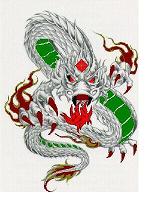 Jul 29, 2005 - 2:40 AM Jul 29, 2005 - 2:40 AM
|
|
 Enthusiast      Joined Nov 4, '02 From Hecho en la Republica Dominicana/Living in NJ Currently Offline Reputation: 0 (0%) |
Ok so i'm at work thinking again.. after reading some post.. and having some mental flash backs.... here is a questions or statment .. you guys pick what it is..
why doesn't changing the exhuast on the celi do anything.... well could it be cause the stock exhuast (on GT's) is pretty much sright compared to other cars..and going from 2.25 to 3 is like making a 4 lane highway in a town that only has 3 cars .... then there the whole thing with toyota's engine saving ECM ... -------------------- |
 |
Replies
 Aug 1, 2005 - 10:32 PM Aug 1, 2005 - 10:32 PM
|
|
|
Enthusiast     Joined Mar 3, '05 From Richmond, B.C. Currently Offline Reputation: 0 (0%) |
Engines need backpressure to run = myth.
Cars do not need backpressure -- it's a myth. Backpressure is an inevitable consequence of not having a variable exhaust size. The harder the engine is working, the more exhaust it needs to get rid of, and the ideal situation would be for the exhaust pipes to grow as the engine pumps out more fumes. Since we don't have that technology, what we do is pick a compromise size. It's not as efficient at low revs as a small pipe, because the exhaust gases have room to expand, cool and slowdown, reducing the scavenging effect and forcing the engine to expend energy on moving what is now heavier gas. At high revs it's not as efficient as a larger pipe, because the gas bottlenecks. Either way, you get backpressure. Really big pipes are good only if you're producing enough exhaust to be efficiently using them. This is why FI need larger pipes. The turbo/supercharger or NO2 system is essentially virtual displacement, burning more gas and creating more exhaust. The same rules of physics and fluid dynamics apply to all exhaust, whether it's generated by pulling air into an engine or forcing it in. Still an internal combustion engine. The backpressure myth is best punctured by the fact that really large pipes on a small engine, because they let the gas expand and cool, end up creating greater backpressure and reducing scavenging than a small pipe. The big pipes have less initial backpressure, but create their own. Stock pipes are generally smaller than those who like performance want because they are designed to create the most efficient flow at low RPMs, to improve acceleration and everyday drivability. Performance-oriented owners typically spend more time at high revs, when a slightly larger set of pipes would be most efficient. In short backpressure is always bad. The trick is to get high exhaust velocity and low backpressure when you need it. Bigger pipes is the easiest, but least effective way of improving flow. |
Posts in this topic
 macavely Thinking at work again ...... Jul 29, 2005 - 2:40 AM
macavely Thinking at work again ...... Jul 29, 2005 - 2:40 AM
 FAQdaWorld it has some effect, but modern cars are designed w... Jul 29, 2005 - 4:07 AM
FAQdaWorld it has some effect, but modern cars are designed w... Jul 29, 2005 - 4:07 AM
 Boss-Celica I am sure you can gain hp and torque if you had he... Jul 29, 2005 - 4:53 PM
Boss-Celica I am sure you can gain hp and torque if you had he... Jul 29, 2005 - 4:53 PM
 MonsterBOX gives u sound and faster rev...decreases backpress... Jul 29, 2005 - 6:00 PM
MonsterBOX gives u sound and faster rev...decreases backpress... Jul 29, 2005 - 6:00 PM
 Fastbird Galcobar, that's an EXCELLENT post. He hit th... Aug 2, 2005 - 11:38 AM
Fastbird Galcobar, that's an EXCELLENT post. He hit th... Aug 2, 2005 - 11:38 AM  |
1 User(s) are reading this topic (1 Guests and 0 Anonymous Users)
0 Members:
| Lo-Fi Version | Time is now: September 20th, 2025 - 5:47 PM |




